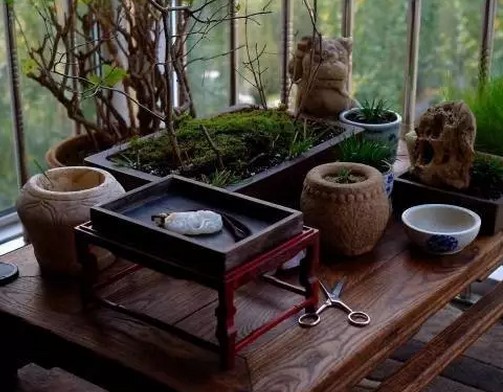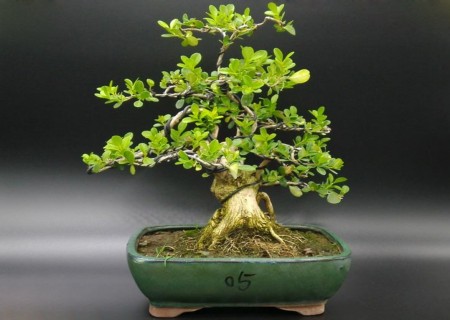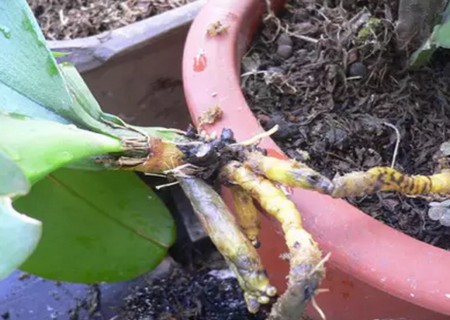Planting and Cultivation Techniques of Calamus calamus Bonsai
The ancients Zhang heard Jiaoyun say, "the calamus has the atmosphere of mountains and forests, but not rich and noble." There is a clean shape, no dirty shape, clear air out of the wind and dust, spirit machine between water and stone, this is a static product, this is a birthday product, players cherish. "

On the classification of calamus in Ming Dynasty, there are six kinds of products recorded by Zhang Han in Ming Dynasty: money, ox top, tiger beard, sword ridge, xiangmiao, Taiwan cattail, all pot species as clear donors, there are three kinds of money, tiger beard and fragrant seedlings.
The method of ancient calamus cultivation: "planted with sand, cut and washed in spring, the more cut, the thinner and thinner, even the root length two or three points, leaf length inch Xu."
Today, people's formula for cultivating calamus is: "if you plant near water, you will be healthy with stones." Dry leaves and roots are wet, like warmth and fear of cold. The breeze keeps away from the rain, and the less is more prosperous. Like yin and fear the sun, moisturize dew and avoid frost. The stone is too thin and the kind of mud is quite strong. Thin application of thick irrigation, diligence to remove yellow. Green as emerald, fragrant and visceral. Ye Yi Qingqi, not suitable for makeup. With stone to clear supply, the ancient basin is hidden. Simple and elegant and natural, the most suitable for the study. "
To sum up, "the Xinlu course of the sketch bonsai" summarizes some key points of calamus cultivation:
1. The best time for ramets of Acorus calamus: Grain Rain (Acorus calamus entered a prosperous period after its birthday on April 14)
2. Plant material: loose sandy loam (mixed soil of immortal soil, phytolith, vermiculite, river sand, red jade soil, nutrient soil, etc.)
3. Fertilization: an appropriate amount of organic granular fertilizer is placed on the basin surface (the fertilization of Acorus calamus is also tangled, if it is not fertilized, the leaves will turn yellow, and it is not resistant to fertilizer).
4. Watering: dry leaves and wet soil (like wetting, avoid drought. Daily watering is appropriate to keep the basin soil moist, but too much watering can easily lead to leaf yellow)
5. Illumination: Acorus calamus likes shade, but it still needs scattered light (it is recommended to keep it in the shade of large and medium-sized bonsai trees)
6. Leaf cutting: it is a consensus that the more the leaves are trimmed, the finer they are, but the times of pruning are not easy to be too frequent. The rotten leaves and yellow leaves are removed regularly to keep the best ornamental effect.
As one of the best matching scenery of bonsai, calamus is becoming more and more popular among bonsai lovers because of its literati temperament, fragrant smell and attractive color.
Sowing seeds
The ripe red berries collected will be cleaned and sowed indoors in autumn to keep moist soil or shallow water. Under the condition of about 20 ℃, the berries will germinate in early spring, and then separated and cultured. When the seedlings grow healthily, they can be transplanted and planted.
Ramet
Dig out the underground stem with a shovel in the early spring (around the Qingming Festival) or during the growing period, wash it clean, remove the old root, stem and withered leaves and stems, and then cut the underground stem into several blocks with a sharp knife, each retaining 3-4 new buds for propagation. Separate planting in the growing period, dig up the roots of the plant, wash them, remove the roots of 2-stroke-3, and then divide them into lumps, and keep young leaves, buds and new roots in the ramet.
Line spacing
For open field cultivation, select the low-lying land by the pool, and the row spacing of the planting land is 20m and 50m, but it can be planted by belt, rectangle, geometry and so on according to the needs of waterscape layout. The depth of planting to keep the main bud close to the mud surface, while watering 1-3 cm. When potting, choose the watertight pot, the inner stem is 40-50 cm, apply sufficient base fertilizer to the bottom of the pot, dig holes in the middle to implant the rhizome, the growth point reveals the soil surface, and add 1-3 cm of water.
Fertilizer application
Acorus calamus has strong adaptability in the growing season and can be managed extensively. Keep the water level or damp during the growing period, apply topdressing for 2-3 times, and combine fertilization to weed. Nitrogen fertilizer is the main fertilizer in the initial stage, phosphorus fertilizer and potassium fertilizer should be applied mainly before heading and flowering, and fertilizer must be put into the mud (5 cm below the mud surface) each time. Clean up the withered branches and leaves on the ground before overwintering and concentrate on burning or retting fertilizer. The open field cultivation should be renewed for 2-3 years, and the potted plants should be changed and planted once every 2 years.
Soil.
The soil rich in humus is the best for cultivation, and the growth of sandy soil is also good. The cultivation place should choose a half-shaded place to avoid strong direct sunlight. If you can accept 50% UV 60% light, the fertility will be vigorous and the leaf color will be soft and beautiful. Sexual dampness likes nitrogen fertilizer, fertilization with cooked bean cake water or nitrogen, phosphorus, potassium, quick-acting No. 1, No. 2, etc., a small amount of application every 20-30 days, the proportion of nitrogen fertilizer is high, which can promote the leaf to flourish. The cultivation soil should always be kept moist, and the bottom of a small pot can be padded with a water plate to maintain moisture. The interior decoration chooses the window edge light source to enter, if the growth momentum weakens, should immediately move out of the outdoor, fully irrigate, and accept the soft sunlight to restore vitality. The sex likes to be warm to high temperature, and the suitable temperature for childbearing is about 18-28 ℃. When planting for a long time is too crowded, it should be forced to split, and then planted after changing the soil.
Storage
Harvest 3-4 years after planting. Dig out the rhizome in early spring or the end of winter, cut off the leaves and fibrous roots, wash and dry, bump off the hair and serve.
Time: 2019-05-30 Click:
- Prev

How to raise Populus tomentosa under the mountain pile
Yellow poplar likes light, because proper light can better promote photosynthesis; yellow poplar likes water, because its root system is not developed enough, so it is relatively difficult to absorb water, and it needs external water supply to ensure water supply; yellow poplar is cold-resistant, because most of the wild plants grow at high elevations; yellow poplar is afraid of the wind.
- Next

How to remedy the rotting Root of Phalaenopsis
Every Spring Festival, Phalaenopsis will grow slender pedicels from the axils of the leaves, and then slowly bloom like butterflies, adding a lot of Spring Festival atmosphere to the festival, deeply loved by people and known as the queen of foreign orchids. The butterfly orchid is graceful and flies like a butterfly, hence its name
Related
- Fuxing push coffee new agricultural production and marketing class: lack of small-scale processing plants
- Jujube rice field leisure farm deep ploughing Yilan for five years to create a space for organic food and play
- Nongyu Farm-A trial of organic papaya for brave women with advanced technology
- Four points for attention in the prevention and control of diseases and insect pests of edible fungi
- How to add nutrient solution to Edible Fungi
- Is there any good way to control edible fungus mites?
- Open Inoculation Technology of Edible Fungi
- Is there any clever way to use fertilizer for edible fungus in winter?
- What agents are used to kill the pathogens of edible fungi in the mushroom shed?
- Rapid drying of Edible Fungi

